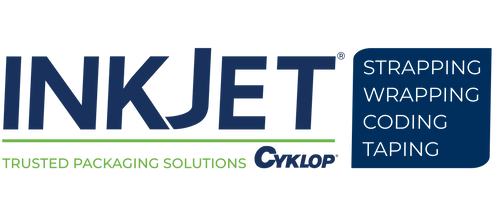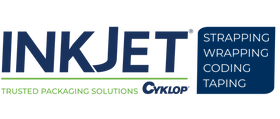Improve Automation With a Friction Feeder Machine
To comply with today’s product packaging standards, variable data and traceable codes are becoming mandatory across many industries. From food and beverages to chemicals and electronics, label elements like lot codes, serial numbers, and date codes are regularly required by both legislative bodies and distribution chains to appear on product packaging. With these codes in place, companies can more readily trace their products and comply with industry-standard labeling requirements.
Companies that need to apply these codes to their products can do so in a variety of ways. For instance, many companies utilize handheld printers to directly mark their goods with the required label elements. Others create physical labels filled with batch-specific information and apply them to each package by hand.
Although these labeling methods do work, the amount of manual labor involved heavily caps operation efficiency levels. For those that need to label large product quantities, automating the coding process is the best move forward.
Here, we take a look at the benefits provided by one of the most popular automated production line technologies today, the friction feeder machine.
How a Friction Feeder Machine Benefits Line Setups
Friction feeder machines are production line devices that “feed” flat packaging materials onto conveyor belts. Using a combination of rollers and belts, friction feeder machines are able to accurately dispense packaging materials at hundreds of meters per minute. Further, each packaging unit is ensured to be flat and well-spaced from other adjacent units. As such, each unit is in a prime position to be marked farther down the line.
With the combination of a friction feeder machine and an industrial printer, users can automate the variable data printing process to more quickly and accurately label flat materials such as:
- Cards
- Pamphlets
- Envelopes
- Cardboard cartons
- Blister packs
- Flexible pouches
Although friction feeder machines are frequently used in larger production lines, they can also be used in a stand-alone configuration. In these setups, the feeder still lays out the packaging materials in prime printing condition, but there’s no conveyor to move them. Instead, they stay in a still position where a thermal printer can apply the necessary markings.
Below, we explore how to combine a friction feeder machine with the right industrial printer for optimal results.
Combining Friction Feeder Machines With Industrial Printers
Generally speaking, friction feeder machine users will choose from three types of printers when configuring their setups:
- Continuous inkjet (CIJ) printers
- Thermal (TIJ) inkjet printers
- Thermal transfer overprinters (TTO)
Each of these printer types greatly differs in size, operation, speed, and cost. When choosing amongst them, it’s essential to consider a few key elements, including:
- What markings need to be placed on the materials
- Whether the materials will be moving or stationary
- What printing speeds are necessary to meet production goals
Continuous Inkjet Printers
Continuous inkjet printers, like the DuraCode Touchscreen or DuraCode Keyboard, are production line printers that excel at marking substrates for up to 24 hours a day. Within a friction feeder line, the CIJ is positioned after the feeder so that it can mark each substrate as it passes down the line. Offering printing speeds around 300 m/min, CIJ printers enable line operators to mark industrial product quantities with essential variable data like expiration dates and lot codes.
However, CIJ printers are not perfect for all companies. For example, there are two limitations associated with CIJ printers:
- They need to be positioned on a moving production line to work properly.
- They don’t have the DPI capabilities to print sharp pictures/graphics.
Thermal Inkjet Printers
Thermal inkjet printers, on the other hand, do not have these limitations. TIJ models like the Anser Pro-S come in both production line and handheld varieties, enabling operators to use them in conjunction with either conveyor belt setups or stand-alone feeders. TIJ printers also frequently offer DPI resolutions around 600 x 300, allowing them to make more vibrant images than CIJ models.
These benefits do often come at the expense of speed however—the Pro-S maxes out at 120 m/min while the DuraCode CIJ maxes out at 320 m/min. At the same time, there are exceptions to this rule. The Anser X1 for instance is a TIJ printer that offers a max printing speed of 300 m/min.
Thermal Transfer Overprinters
Thermal transfer overprinters are also commonly used alongside friction feeder machines, but they are gradually becoming less popular compared to CIJ and TIJ options. Although TTO models are able to create vibrant images and sharp text, they are not capable of matching the printing speeds of either CIJ or TIJ models. It’s also more difficult to align a TTO machine’s printing rate with the movement of a conveyor belt, leading to a higher rate of misprints as compared to a line outfitted with a CIJ or TIJ printer.
See the chart below for a simplified comparison between CIJ, TIJ, and TTO models:
|
|
|
|
|
|
|
|
|
|
|
|
|
|
|
Looking To Automate Your Coding Process? InkJet, Inc. Is Here To Help
If you want to make your labeling process more efficient, automation is key. By integrating a friction feeder machine and industrial printer into your operation, you can reduce the amount of time it takes to complete packaging applications for better overall productivity.
At InkJet, Inc., we have been helping businesses automate their labeling processes for over 30 years. Whether you’re looking for a new CIJ printer, TTO consumables, or advice on how to improve your line setup, we’re here to support you.
To learn more about friction feeder machines and their role in automated labeling lines, contact us online today or call 1(800) 280-3245.



